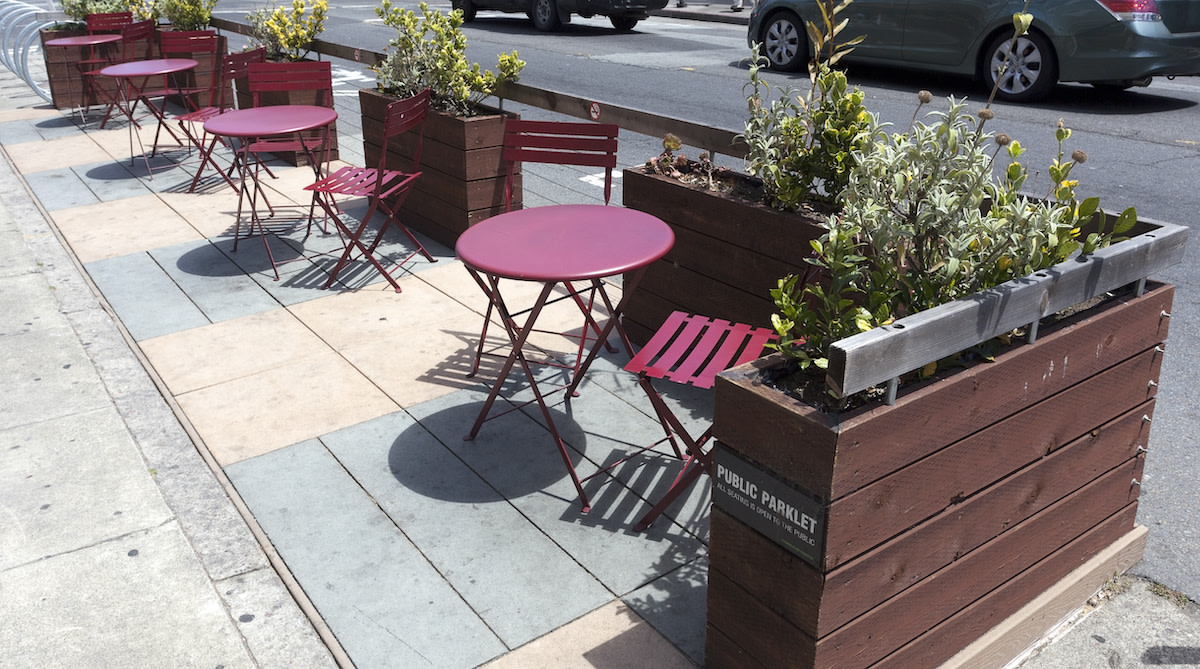How Parklets Bring Recreational Space to Urban Areas
Written by MasterClass
Last updated: Jun 7, 2021 • 3 min read
In dense cities like New York, San Francisco, Seattle, and parts of Los Angeles, many city public works offices have invested in a new kind of recreation space: parklets.
Learn From the Best
What Is a Parklet?
A parklet is a small public space that serves as a highly condensed public park. The vast majority of parklets reappropriate space that previously served another purpose—typically, converted street parking spaces or a public right-of-way that was previously used for transportation. Parklets may replace public space previously devoted to cars with sidewalk extensions, seating areas, green space, and street furniture.
Parklets are distinct from pocket parks, which are small but permanent parks specifically zoned for recreation. A parklet, by definition, involves space that has been reappropriated for recreation.
A Brief History of Parklets
The history of parklets began in 2005 and centered around San Francisco.
- Origin: Urban historians generally agree that the first parklet was built in San Francisco in 2005. Under the guidance of the REBAR Design and Art Studio, the city pioneered the concept of converting a parking spot into an extension of the sidewalk, replete with seating and greenery in the form of a potted tree.
- Expansion: The concept of parklets caught on in many cities in the United States and throughout the world, bolstered by events like Park(ing) Day—an annual event that began in San Francisco in 2005. The event encourages participants to feed parking meters and use their time to relax and recreate in the parking space rather than parking a car there. This event ended up inspiring parklet design going forward.
- National popularity: Many cities have launched parklet programs to infuse urban spaces with more recreation areas and cut down on vehicle traffic. San Francisco leads the nation in parklets, and the San Francisco Parklet Manual has served as a guidepost for other cities looking to bring parklets to their own streets. In addition to San Francisco, public parklet programs either exist or soon will in New York City, Philadelphia, Oakland, Los Angeles, San Diego, Boston, Miami, Houston, Seattle, Cincinnati, Minneapolis, Chicago, Dallas, Montreal, Vancouver, and many other cities around the globe.
What Is the Purpose of Parklets?
Street parklets bring public recreation spaces to areas that lack them. Urban planners may choose parklet locations in areas that lack nearby public green spaces. Parklets may even feature bike parking to encourage alternative transportation. They contribute to the beautification and diversify the activities of the street by replacing parallel parking spaces with leisure spaces.
While parklets may remove parking lanes from local business districts, they can simultaneously boost foot traffic by providing more recreational space. They also can make drivers more mindful of speed limits. Parklets can also encourage alternative transportation if they are built near existing bus stops.
How to Create a Parklet
To submit a proposed parklet in your own community, inquire with your city government to see if a parklet program exists. Most parklet-friendly cities offer a parklet application process that allows citizens and business owners to petition for parklets in specific areas. The parklet permit application will indicate design guidelines and various dos and don'ts. It typically must be approved by a local department of transportation, a planning department with the mayor's office, and any other entity with domain over city streets.
Implementing parklets in a community can transform the public space for the better. If you think your own neighborhood would benefit from a parklet, contact your municipal government or organize your neighbors to set the process in motion. Due to increasing community support, implementing parklets has become a popular trend in urbanism around the globe.
Learn More
Get the MasterClass Annual Membership for exclusive access to video lessons taught by masters, including Frank Gehry, Will Wright, Annie Leibovitz, Kelly Wearstler, Ron Finley, and more.
